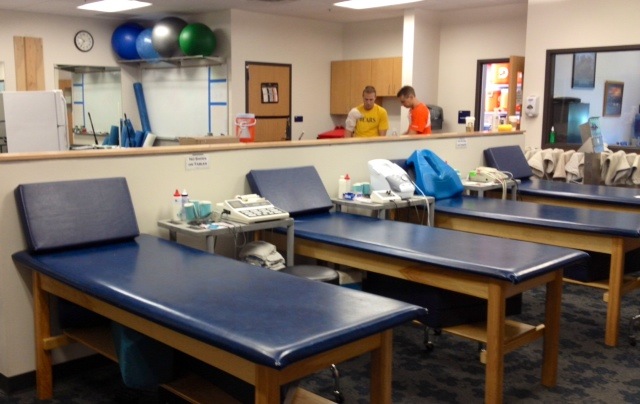Mar 29, 2018Open for Business

My last submission started out with the questions: What frustrates you? What gets under your skin as an athletic trainer? In this piece, we are going to talk about something that can be frustrating at every setting and every level: athletic training room hours.
This has become a hot topic item for discussion lately. (If you are a member of the Secondary School Athletic Trainer Facebook page, you might have noticed that this was discussed at length before and after the holiday season). However, it really shouldn’t be a big issue.
Let me start by saying that as a teacher and athletic trainer at Penn-Trafford High School in Harrison City, Pa., my schedule might not make everyone in the athletic department happy. That is ok because coaches make their team’s practice schedule, and it doesn’t always make everyone happy, either. There will always be someone who has a complaint, legitimate or not, about someone else’s schedule.
Overall, my fellow Penn-Trafford athletic trainers and I have been adamant that we will not be in the athletic training facility seven days a week. We follow the old adage: We work to live, not live to work!
That being said, keep in mind why we are in our position and have a purpose for opening your facility. The goal of the hours in your facility should be twofold: 1) Provide appropriate health care for all games, and 2) Provide rehabilitation services for all injured athletes. If we are able to be there for every practice too, that is an added bonus, but not a requirement.
Using those goals as my guidelines, during the academic year, my athletic training facility is open after school until the end of practices — normally around 6:30 or 7:00 p.m. On Saturdays, it is open 30 minutes before the first practice, which normally is around 7:30 a.m., until 12:00 p.m. If a coach elects to practice outside of this time frame, they are on their own. For the past 33 years, this schedule has served everyone well at Penn-Trafford, and very few practices have occurred without having appropriate athletic health care present.
Fall preseason and vacation days do present some challenges regarding athletic training room hours and can stretch you thin if you are the only athletic trainer on staff. Multiple athletic trainers at the school enable each person to better achieve a life-work balance — something that should be a priority for all athletics personnel.
During the first week of fall preseason at Penn-Trafford, our athletic training facility is normally open from 6:30 a.m. until 8:30 p.m. Fortunately, this schedule is only for that first week. Holidays, specifically Christmas, Easter break, or spring vacation, we are in the facility from 7:30 a.m. until 12:00 p.m. It is our opinion that all teams can get their practices completed during this time frame.
As I stated earlier, coaches can elect to not practice during this time. If that happens, they know that they are responsible for the well-being of their student-athletes. All coaches in Pennsylvania are required to have first aid and CPR training, as well as sudden cardiac arrest and concussion education once every 12 months. I am confident that our Penn-Trafford coaches have basic skills and knowledge and are very aware of our emergency action plan. As athletic trainers, we have to remember that coaches are also adults, usually teachers who are responsible on a daily basis for communication, classroom management, and student safety. For them, athletics is just an extension of the classroom.
Overall, my fellow Penn-Trafford athletic trainers and I have been adamant that we will not be in the athletic training facility seven days a week. We follow the old adage: I work to live, not live to work! This has to be a consideration for all athletic trainers. If not, and we are unhappy with our schedules, we only have ourselves to blame. It is no wonder that our profession is seeing a high turnover, increased burnout, and mass exodus. In what other health care profession can you just walk in at any point during the day and expect to get treatment, rehabilitation, and protective taping? All other health care providers have established hours and appointments. Should we start doing the same? Will that help elevate the respect of our profession? Will it increase our level of importance within the athletic world? Will it increase our value? These are all questions that you need to ask yourself.
When setting your athletic training room hours, be true to your institution, your teams, your student-athletes, but most importantly, to yourself. You know your schedule and the needs of your family or loved ones. Take time to take care of them and remember to include yourself.



